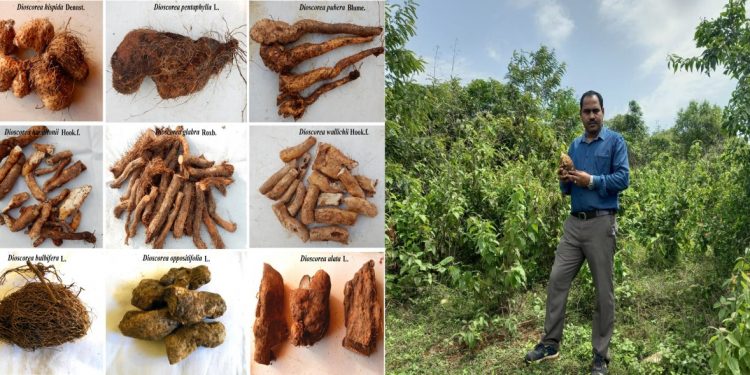Koraput: Tribals in Koraput district have been traditionally consuming varieties of wild roots that are more nutritious than yam. These tubers prevent hunger, malnutrition and ensure food security among the tribal population.
While one might nauseate and frown at the mention of these wild roots and mark them as toxic and unhealthy for humans, in reality, many of these tubers are edible and have been actually sustaining the tribals with food and nutrition since ages.
These tubers also help in boosting immunity as all of them are not toxic and life threatening for humans.
This was stated here by Debabrata Panda, an assistant professor at School of Bio-Diversity and Conservation of Natural Resources, Central University of Odisha in Koraput.
Panda has been carrying out extensive research for the last 10 years on various types of wild fruits, flowers and wild roots consumed by the tribals. He said that the tribals in Koraput mainly consume eight types of wild roots as food as well as medicine.
During food shortage, they mainly use wild roots such as Fitkala, Taragai Kanda, Kasha Kanda, Kulia Kanda, Soranda Kanda and Cherbhaga Kanda as food.
They collect wild roots from jungle and use those in preparation of their traditional food. These wild roots are rich in protein, minerals and essential nutrients.
Moreover, these are also good sources of vitamin-C, vitamin-E, sodium, potassium, calcium and zinc. These wild roots are also rich in anti-oxidants that help in boosting their immunity against deadly diseases.
This apart, these wild roots prevent hunger and malnutrition during climate change induced droughts. Panda pleaded for more publicity of these edible wild roots which will help in facilitating the lives and livelihoods of the tribals.
He has stressed on commercialisation of these wild roots like coffee and Kala Jeera rice of Koraput through a startup. He said that the tribals should be encouraged to take up commercial production of wild roots and their conservation.
PNN






































